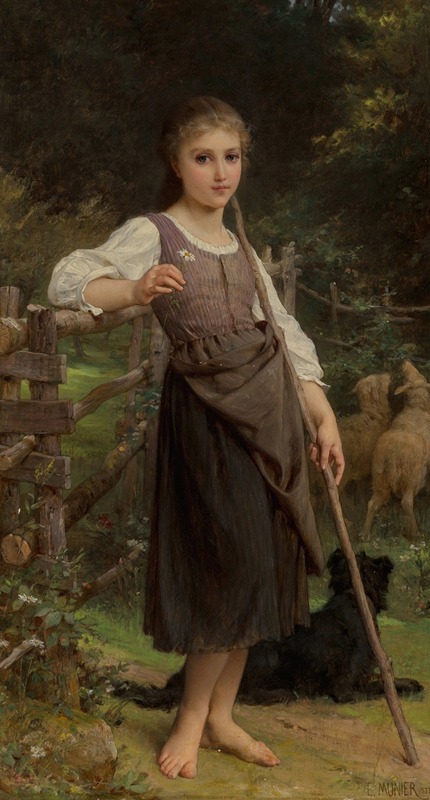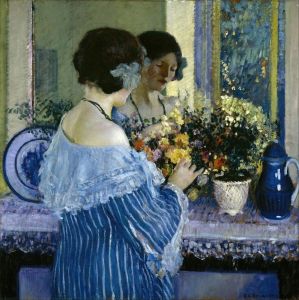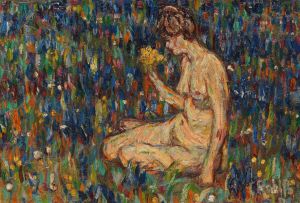
The shepherdess
A hand-painted replica of Émile Munier’s masterpiece The shepherdess, meticulously crafted by professional artists to capture the true essence of the original. Each piece is created with museum-quality canvas and rare mineral pigments, carefully painted by experienced artists with delicate brushstrokes and rich, layered colors to perfectly recreate the texture of the original artwork. Unlike machine-printed reproductions, this hand-painted version brings the painting to life, infused with the artist’s emotions and skill in every stroke. Whether for personal collection or home decoration, it instantly elevates the artistic atmosphere of any space.
Émile Munier was a French academic artist known for his detailed and realistic portrayals of children and domestic scenes. Born in Paris on June 2, 1840, Munier studied at the École des Beaux-Arts and was influenced by the works of William-Adolphe Bouguereau, under whom he studied. Munier's paintings are characterized by their meticulous attention to detail, vibrant colors, and the tender depiction of his subjects.
"The Shepherdess" is one of Munier's notable works, showcasing his skill in capturing the innocence and beauty of rural life. Although specific details about the painting's creation and history are limited, it is consistent with Munier's style and thematic focus. The painting typically features a young shepherdess, often depicted in a pastoral setting, surrounded by sheep or other farm animals. This subject matter reflects the 19th-century European romanticism and nostalgia for pastoral life, which was a common theme among artists of that era.
Munier's work, including "The Shepherdess," is celebrated for its technical precision and the emotional warmth it conveys. His paintings often evoke a sense of tranquility and simplicity, capturing moments of everyday life with grace and elegance. The use of light and shadow in his work adds depth and dimension, bringing his subjects to life in a realistic yet idealized manner.
Throughout his career, Munier exhibited his works at the Paris Salon, where he gained recognition and acclaim. His paintings were popular among collectors and art enthusiasts, both in France and internationally. Munier's ability to portray the delicate features and expressions of his subjects made his work particularly appealing to audiences who appreciated the academic style of painting.
While "The Shepherdess" is a testament to Munier's artistic talent, it also reflects the broader cultural and artistic trends of the 19th century. During this time, there was a growing interest in depicting rural and pastoral scenes, as industrialization and urbanization transformed European society. Artists like Munier sought to capture the simplicity and purity of rural life, offering viewers a glimpse into a world that was rapidly changing.
Émile Munier continued to paint and exhibit his work until his death on June 29, 1895. His legacy endures through his paintings, which continue to be admired for their beauty and technical mastery. "The Shepherdess," like many of Munier's works, remains a cherished example of 19th-century academic art, celebrated for its ability to convey the timeless charm of pastoral life.
In summary, "The Shepherdess" by Émile Munier exemplifies the artist's dedication to capturing the essence of rural life with precision and warmth. While specific details about the painting may be scarce, its significance lies in its representation of the artistic and cultural values of its time, as well as Munier's enduring influence in the world of academic art.


















